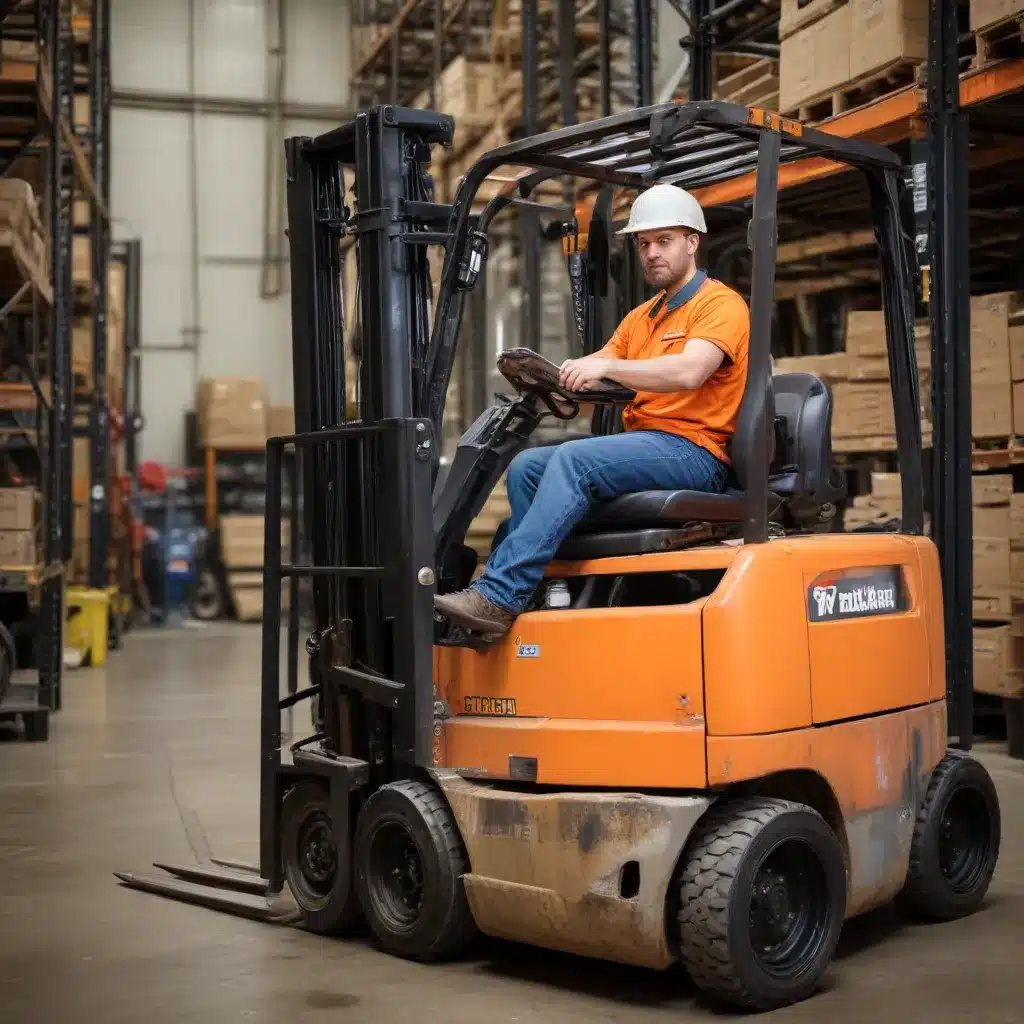
The Evolving Landscape of Forklift Maintenance
As the backbone of efficient warehouse and logistics operations, forklift maintenance has become increasingly crucial in today’s fast-paced business environment. Forklift technicians play a pivotal role in ensuring the smooth functioning of these vital assets, minimizing downtime, and maximizing the lifespan of critical equipment. However, the maintenance industry faces a significant challenge: attracting and retaining skilled professionals in the face of an evolving workforce.
The Skilled Labor Shortage in Forklift Maintenance
The forklift maintenance industry, like many other sectors, is grappling with a skilled labor shortage. As experienced technicians near retirement, businesses are finding it increasingly difficult to replace them with a new generation of skilled workers. This knowledge gap poses a significant threat to the industry’s ability to maintain operational efficiency and keep up with the demands of modern warehousing and logistics.
The problem is further exacerbated by the industry’s struggle to appeal to younger workers. Forklift maintenance is often perceived as a low-tech, physically demanding field, making it less attractive compared to other industries that are seen as more innovative and technologically advanced. Overcoming these perceptions and creating a positive image of forklift maintenance as a rewarding and fulfilling career path is crucial for attracting top talent.
The Impact of Evolving Industry Standards and Technological Advancements
As the forklift industry evolves, so too do the standards and best practices for maintenance. Keeping up with these changes and ensuring compliance can be a significant challenge for maintenance leaders. Failure to adhere to updated standards can lead to reduced operational efficiency, safety risks, and potential legal repercussions.
Moreover, the rapid pace of technological advancements in the industry can be overwhelming for maintenance teams. Selecting the right technologies, such as computerized maintenance management systems (CMMS) and automation tools, and ensuring a smooth integration process, require a strategic approach and a commitment to continuous learning.
Fostering a Culture of Communication and Collaboration
Effective communication and collaboration are essential for successful forklift maintenance operations. Maintenance leaders must foster clear lines of communication within their teams and across various departments and stakeholders. Overcoming language and cultural barriers in diverse teams and collaborating effectively with stakeholders are critical for achieving maintenance objectives.
Utilizing a CMMS can significantly aid in addressing these challenges and improving communication and collaboration. With features like mobile apps, in-app messaging, and real-time notification settings, a CMMS can help maintenance teams stay connected and aligned, even when working in different locations.
Strategies for Attracting and Retaining Skilled Forklift Maintenance Technicians
To address the skilled labor shortage and create a sustainable, high-performing forklift maintenance workforce, employers must implement comprehensive strategies that address both attraction and retention.
Offer Competitive Compensation and Benefits
Competitive compensation is a crucial factor in attracting and retaining skilled forklift maintenance technicians. Ensure that your pay rates are on par with industry standards and the local job market. Beyond salary, consider offering a comprehensive benefits package, including healthcare, retirement plans, and other perks that can make your job offers more enticing.
Invest in Career Development and Training Opportunities
Skilled forklift maintenance technicians are often motivated by the opportunity for professional growth and skill development. Invest in training programs, mentorship initiatives, and clear career advancement paths to demonstrate your commitment to their long-term success. This not only helps attract top talent but also fosters a sense of loyalty and job satisfaction among existing employees.
Embrace Technological Advancements
Leveraging the latest forklift maintenance technologies can make these roles more appealing to a younger, tech-savvy workforce. Implement CMMS solutions, automated guided vehicles (AGVs), and other innovative tools that streamline maintenance processes and reduce physical strain on technicians. By showcasing your commitment to technological innovation, you can position your organization as a leader in the industry and attract candidates who are eager to work with cutting-edge systems.
Foster a Positive Work Environment
Creating a positive and supportive work environment is essential for retaining skilled forklift maintenance technicians. Encourage a culture of open communication, recognition, and work-life balance. Implement programs that address employee well-being, such as ergonomic support, safety incentives, and opportunities for physical activity. These efforts demonstrate your commitment to the overall health and satisfaction of your maintenance team.
Develop Partnerships and Community Engagement
Collaborating with local educational institutions, vocational programs, and industry associations can help build a pipeline of skilled talent. Offer internships, apprenticeships, and job shadowing opportunities to expose young people to the rewarding career paths in forklift maintenance. Additionally, engaging with the local community through volunteering, sponsorships, and community events can enhance your employer brand and attract workers who share your values.
Leverage Data-Driven Insights
Utilize the wealth of data available through a CMMS to make informed decisions about your workforce management strategies. Track key performance indicators (KPIs), such as employee turnover rates, time-to-fill openings, and job satisfaction scores. Analyze this data to identify areas for improvement, measure the effectiveness of your attraction and retention efforts, and continuously refine your approach.
Embracing the Future of Forklift Maintenance
As the forklift industry continues to evolve, maintenance leaders must adapt their strategies to attract and retain the skilled professionals needed to ensure the smooth operation of these critical assets. By offering competitive compensation, investing in career development, embracing technological advancements, fostering a positive work culture, and leveraging data-driven insights, employers can position themselves as employers of choice in the forklift maintenance industry.
Collaboration with local communities, educational institutions, and industry partners can further strengthen the talent pipeline, ensuring a steady stream of skilled technicians to meet the demands of the ever-changing warehousing and logistics landscape. By taking a proactive and comprehensive approach to workforce management, forklift maintenance organizations can overcome the skilled labor shortage and thrive in the years to come.

